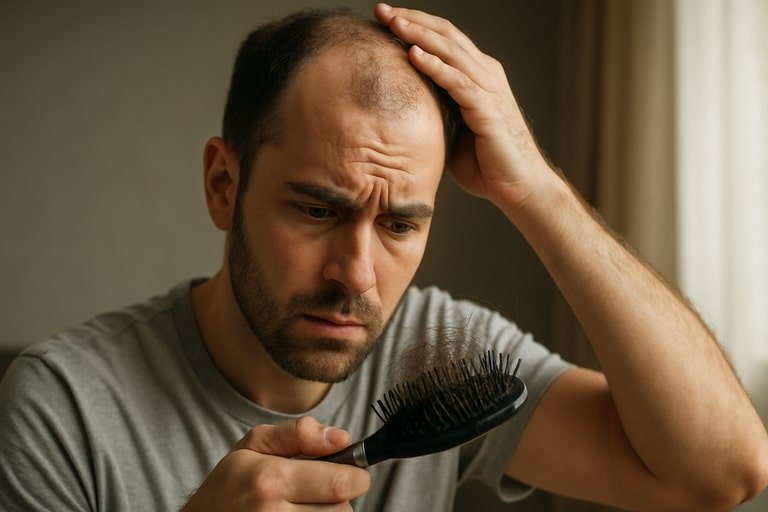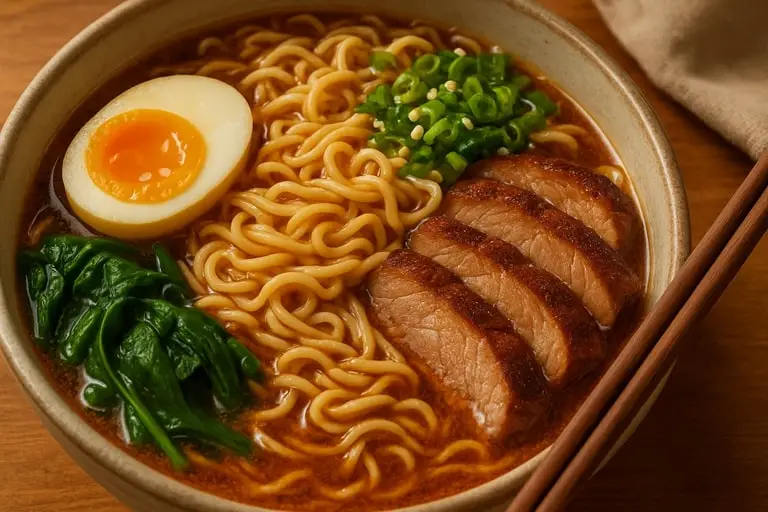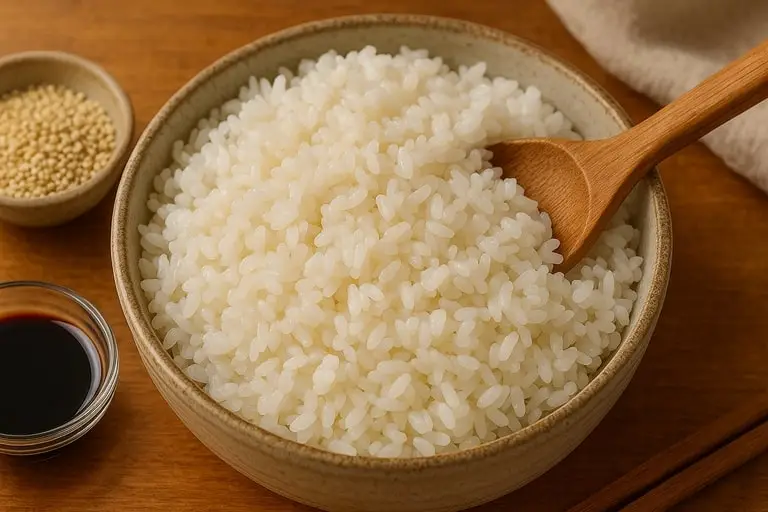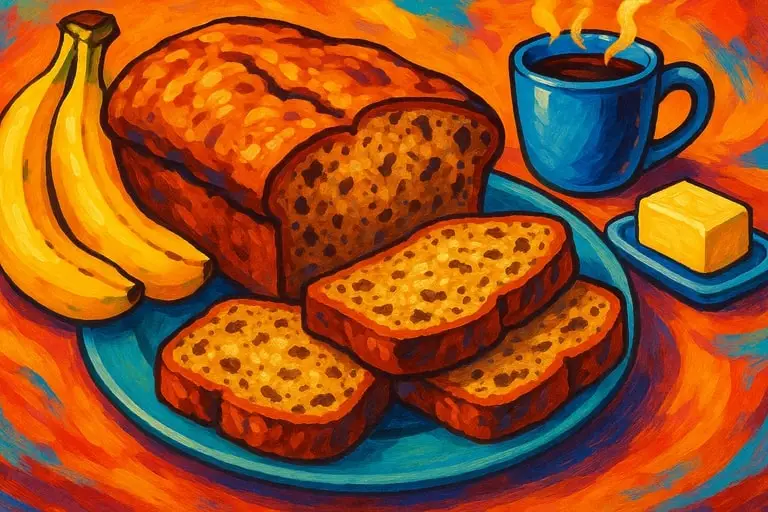Hair loss is one of the most common health and aesthetic concerns worldwide, affecting both men and women across different age groups and lifestyles. Understanding why hair falls out, how it progresses, and what can be done to slow or reverse the process requires more than surface-level advice. It involves grasping the biological mechanisms that influence scalp health, the role of genetics, and the impact of daily habits on hair strength.
When the hair cycle is disrupted—whether by hormonal imbalance, stress, nutritional deficiency, or autoimmune factors—shedding accelerates and leads to noticeable thinning. For some, the process is gradual and almost invisible until density loss becomes apparent, while for others, sudden shedding creates emotional distress. The conversation around hair loss has often been clouded by myths, quick fixes, and misleading products, but science shows that sustainable results require a combination of medical expertise, consistent scalp care, and lifestyle changes that address the root causes.
While genetics play a major role in androgenetic alopecia, commonly referred to as male or female pattern baldness, external factors such as pollution, inadequate nutrition, or aggressive styling accelerate the damage. Hair follicles are sensitive to both internal and external stressors; once they shrink or enter prolonged resting phases, regeneration slows down.
Recognizing early signs such as increased shedding during showering, visible widening of hair parting, or scalp inflammation is critical for effective intervention. Modern dermatology emphasizes early diagnosis through trichoscopy, blood tests for deficiencies, and hormonal profiling, which allow specialists to create personalized treatment pathways.
Equally important is scalp health, a concept often underestimated in the fight against hair loss. Sebum imbalance, clogged follicles, dandruff, and poor microcirculation all create unfavorable environments for healthy growth. Advanced research highlights the microbiome of the scalp as an emerging factor, showing that imbalance in bacteria and fungi populations contributes to inflammation and follicular stress.
Treatments that address not only visible hair strands but also scalp condition tend to produce longer-lasting results. This holistic approach includes clinical therapies like platelet-rich plasma injections, low-level laser therapy, and pharmacological interventions such as minoxidil or finasteride, combined with preventive care strategies.
Dietary choices also directly influence hair thickness and resilience. Protein, iron, zinc, and vitamins A, D, and B12 are essential to maintaining follicle metabolism and keratin production. Deficiencies often manifest first in hair quality before other systemic symptoms appear. Patients who incorporate nutrient-rich foods or supplements tailored to their deficiencies often report gradual improvements. However, nutrition alone rarely solves genetic forms of hair loss, reinforcing the importance of a combined medical and lifestyle-based approach.
Psychological effects should not be underestimated. Hair loss impacts self-esteem, social interactions, and even professional confidence. Many individuals seek quick solutions out of desperation, leading to reliance on unverified supplements or cosmetic camouflage. While these options may provide temporary relief, they do not tackle the underlying issue. The rise of hair transplantation as a reliable option demonstrates the demand for lasting solutions, but even transplants require careful pre- and post-operative care to ensure transplanted follicles adapt and thrive.
A frequently overlooked contributor to shedding is chronic stress, which disrupts hormone balance and pushes follicles prematurely into resting phases. Conditions such as telogen effluvium are directly tied to stressful events, illnesses, or major life changes. Addressing stress through mindfulness practices, yoga, or therapy not only benefits general well-being but also supports hair preservation.
Similarly, medical conditions such as thyroid dysfunction, polycystic ovary syndrome, and autoimmune disorders demand thorough evaluation because treating the root illness often reduces hair loss as a secondary benefit.
Hair cosmetics and styling practices also carry weight. Regular use of high-heat tools, chemical treatments, or tight hairstyles can cause mechanical breakage or traction alopecia. Awareness of these damaging habits allows individuals to modify routines before irreversible damage occurs. Dermatologists increasingly recommend gentle cleansing formulas, scalp massages to stimulate circulation, and reduced reliance on harsh dyes or straighteners. Even small daily choices contribute cumulatively to long-term hair health.
Emerging fields in regenerative medicine offer optimism for future treatments. Stem cell therapy, exosome applications, and genetic research hold potential for more targeted interventions, possibly restoring hair at levels previously considered impossible. While most are still in trial phases, their rapid progress suggests that hair loss management in the coming years will be more precise, with fewer side effects and higher success rates. For now, combining existing medical therapies with lifestyle optimization remains the most effective strategy.
Ultimately, tackling hair loss demands patience and consistency. Results rarely happen overnight, and expectations must be aligned with realistic outcomes. Individuals who adopt a long-term view—working with specialists, adjusting diets, managing stress, and choosing evidence-based products—are more likely to maintain healthier, fuller hair over time. Unlike fad treatments, this comprehensive approach prioritizes follicle vitality, scalp balance, and overall systemic health.
In conclusion, hair loss is not merely a cosmetic issue but a complex health signal that deserves medical attention and informed care. By addressing genetics, nutrition, stress, and scalp environment together, it is possible to slow shedding, encourage regrowth, and restore confidence without falling prey to myths or ineffective remedies. Progress comes through science-backed solutions, lifestyle commitment, and personalized strategies, each working in synergy to support lasting results.
Understanding Hair Loss And Hair Shedding
Hair shedding is a natural physiological process, but distinguishing between normal and excessive loss is essential for early intervention. On average, individuals shed between 50 to 100 strands per day, which are replaced as follicles cycle through growth, transition, and rest phases. However, when the balance tilts and more hairs enter the resting or shedding stage than the growth stage, visible thinning begins.
This distinction is crucial, because panic over normal shedding can lead to unnecessary treatments, while ignoring abnormal loss delays necessary medical evaluation. Shedding patterns also reveal underlying triggers: diffuse thinning across the scalp often signals nutritional deficiency or stress, while localized patches may suggest autoimmune conditions like alopecia areata.
The relationship between hair loss and hair shedding lies in the disruption of follicular cycles. Telogen effluvium, for example, is a condition where a high percentage of follicles prematurely shift to the resting phase following physical or emotional stress.
Though often temporary, it highlights how sensitive the hair cycle is to overall health. On the other hand, androgenetic alopecia is progressive and demands continuous management. Understanding whether shedding is temporary or permanent helps patients and doctors align treatment goals with realistic expectations. Shedding caused by childbirth, illness, or surgery often resolves within months, whereas genetic forms require lifelong strategies.
Hair thinning, another related phenomenon, does not necessarily mean shedding more hair but rather producing weaker, finer strands. This reduction in hair diameter creates the illusion of volume loss even when strand count remains relatively stable. Patients often misinterpret thinning as increased shedding, underlining the need for clinical assessment rather than self-diagnosis. Advanced trichology distinguishes between shedding and thinning using magnification and density measurements, enabling precise categorization of the problem.
Scalp health remains a cornerstone of shedding prevention. Excessive dandruff, dermatitis, and seborrhea can weaken follicular anchoring, leading to higher daily loss. Anti-inflammatory shampoos, medical scalp treatments, and professional cleanings help reduce this burden. Medical-grade scalp care now incorporates technology that measures follicular density and identifies miniaturized hairs that are at risk of falling out. Preventive action during this stage preserves density before significant loss occurs.
Lifestyle also dictates shedding severity. Crash diets, iron deficiency anemia, and poor sleep reduce nutrient availability to follicles. Inadequate circulation due to smoking or sedentary habits further limits oxygen delivery to the scalp. Correcting these systemic imbalances often reduces shedding episodes significantly. Supplementation with iron, omega-3 fatty acids, or vitamin D has been shown to support regrowth in deficient individuals, although supplementation without proven deficiency offers little benefit.
Hormonal influences add another dimension. Menopause, postpartum shifts, and thyroid dysfunction frequently manifest as shedding. Addressing these imbalances medically improves follicular cycles. Women often notice hair loss during perimenopause when estrogen levels decline, highlighting the importance of hormone-aware treatment approaches. Endocrinological collaboration is often necessary to stabilize conditions and prevent prolonged shedding episodes.
Psychological stress remains one of the most potent shedding triggers. Elevated cortisol disrupts hair cycles, and even minor life stressors accumulate to affect follicular health. Stress management techniques such as mindfulness, breathing exercises, or professional counseling provide tangible improvements over time. In many cases, reducing stress not only benefits hair but also overall metabolic and immune health, creating a positive feedback loop.
Cosmetic practices that minimize mechanical damage are equally important. Reducing the frequency of tight hairstyles, avoiding harsh chemical relaxers, and moderating heat exposure help decrease breakage mistaken for shedding. Patients often notice immediate improvements when adopting gentler styling routines, underscoring how lifestyle habits are intertwined with hair density outcomes. Regular scalp massages also improve blood flow and nutrient delivery, offering natural support for shedding reduction.
Advancements in technology now provide tools for monitoring hair shedding at home. Smart combs, digital scalp analyzers, and mobile applications help track daily loss and identify trends that indicate worsening conditions. These innovations allow patients to seek medical advice earlier, before irreversible follicle miniaturization occurs. Digital platforms that connect trichologists and dermatologists with patients online further democratize access to expertise, enabling timely interventions.
Ultimately, hair shedding is both a symptom and a signal. It reflects the state of nutrition, hormone balance, psychological health, and external stressors. Distinguishing between temporary shedding and progressive hair loss requires awareness, patience, and professional guidance. By combining accurate diagnosis with preventive lifestyle adjustments and targeted treatments, individuals can regain control over their hair health and mitigate the distress often caused by visible thinning.
Hair Loss And Scalp Health For Lasting Results
When addressing hair loss, focusing on scalp health ensures long-term resilience and optimal follicle function. The scalp serves as the foundation for growth, and its condition directly influences whether follicles thrive or weaken. A balanced scalp environment includes proper hydration, sebum regulation, healthy blood circulation, and a stable microbiome.
Disruptions in any of these elements trigger inflammation and follicle stress, accelerating loss. Chronic dandruff, seborrheic dermatitis, and fungal imbalances often create hostile conditions where follicles struggle to regenerate, emphasizing the need for medical attention alongside cosmetic care.
Hair thinning becomes more prominent when scalp issues remain untreated. Miniaturization of follicles accelerates under inflammatory conditions, leading to weaker strands and eventual dormancy. Treatments targeting scalp restoration—such as medicated shampoos, antifungal therapies, and clinical exfoliation—are effective in reducing these stressors.
Dermatologists now combine traditional pharmacology with innovative approaches like microneedling to improve circulation and stimulate follicular activity. These treatments bridge cosmetic care and medical science, producing more sustainable outcomes than surface-level solutions.
Natural hair loss remedies, though often underestimated, play an important complementary role. Essential oils like rosemary and peppermint show evidence of stimulating circulation, while aloe vera and green tea extracts reduce inflammation. While not replacements for medical therapies, these natural options enhance overall scalp balance and can be integrated into daily routines without significant side effects. Patient adherence to natural remedies is often higher due to accessibility and affordability, making them valuable allies in comprehensive management plans.
How to stop hair loss depends on identifying whether the cause is genetic, hormonal, or environmental. Scalp-focused interventions provide a common ground because they enhance follicle resilience regardless of the root cause. For patients with androgenetic alopecia, combining medical therapies with scalp treatments maximizes results. For those experiencing stress-related shedding, scalp care accelerates recovery by improving local blood flow and nutrient absorption. This dual strategy ensures that systemic improvements translate into visible hair density gains.
Emerging interest in the scalp microbiome has opened new perspectives on prevention. Studies suggest that an imbalance in microbial populations contributes to inflammation and hair loss progression. Probiotic shampoos and topical treatments aimed at restoring microbial diversity are gaining traction as the next frontier in scalp therapy. Addressing this dimension complements traditional approaches and represents a paradigm shift in how professionals understand and manage hair health.
The psychological benefit of improving scalp condition should also be acknowledged. Patients often report greater confidence and reduced anxiety after incorporating scalp therapies, even before significant regrowth occurs. This demonstrates the holistic value of scalp-centered strategies, which influence both physical appearance and emotional well-being. Restoring scalp comfort—reducing itchiness, flaking, and tenderness—fosters a more positive relationship with one’s hair and self-image.
Nutritional support for scalp health cannot be overlooked. Adequate hydration, omega-3 fatty acids, and antioxidants counteract oxidative stress, which is a key driver of follicle damage. Foods rich in vitamins C and E support collagen synthesis and protect against free radicals, fortifying both scalp and hair structure. Integrating these nutrients ensures systemic reinforcement of local treatments, providing a multi-layered defense against thinning.
Medical interventions increasingly focus on scalp-targeted delivery systems. Platelet-rich plasma injections directly nourish follicles, while topical finasteride formulations minimize systemic exposure and maximize localized results. These innovations reflect a growing consensus that the scalp should be treated as a critical ecosystem, where each intervention enhances follicle vitality. Personalized protocols, based on genetic and biochemical testing, further refine this approach, ensuring that treatments align with individual scalp conditions.
Patient education remains crucial. Misconceptions about washing frequency, oil application, or product selection often worsen scalp imbalances. Dermatologists emphasize personalized routines rather than generic advice, tailoring recommendations to hair type, environment, and lifestyle. This individualized guidance not only improves outcomes but also empowers patients with practical knowledge, reducing reliance on unverified information found online.
The convergence of medical science, natural remedies, and lifestyle optimization creates a comprehensive framework for addressing hair loss through scalp health. Each element contributes uniquely, and together they form a strategy that prioritizes both visible improvement and long-term resilience. By recognizing the scalp as the central hub of follicular vitality, patients and professionals can move beyond temporary fixes toward lasting solutions.
In the final perspective, treating hair loss through scalp health aligns with the principle that prevention is more effective than correction. Restoring balance, reducing inflammation, and optimizing circulation create conditions where follicles can thrive, ensuring that interventions are not just reactive but preventive. With continuous advancements in dermatology and growing awareness of holistic care, scalp-focused strategies offer a path to sustained confidence and healthier hair for years to come.
Hair thinning is one of the most common cosmetic concerns worldwide, and while it does not always indicate severe health issues, it affects self-confidence and quality of life. Unlike sudden hair loss, which may present as bald patches or rapid shedding, hair thinning develops gradually, making hair appear less dense over time.
Both men and women can experience it, and its causes range from genetic predispositions and hormonal fluctuations to lifestyle factors such as stress, poor nutrition, and overuse of styling products. By understanding the underlying triggers, individuals can make informed decisions about prevention, treatment, and holistic care, ensuring not only healthier hair but also greater peace of mind in the long run.
From a medical perspective, hair thinning often begins with subtle changes in the hair growth cycle. Normally, follicles rotate through growth, rest, and shedding phases, but disruptions in this balance lead to more strands resting than growing. Genetics play a significant role, with hereditary patterns like androgenetic alopecia accounting for a large proportion of cases. Yet environmental and lifestyle influences can accelerate the process. Excessive heat styling, chemical treatments, or chronic scalp tension from tight hairstyles may weaken hair shafts and follicles. Even daily habits, such as high sugar consumption or lack of protein, can impact follicular strength. This highlights the importance of adopting healthier routines alongside targeted treatments.
For women, hair thinning is especially tied to hormonal shifts. Conditions such as polycystic ovary syndrome, pregnancy, or menopause can alter estrogen and progesterone levels, leading to visible scalp density reduction. Men often notice thinning around the crown or temples, which may begin in early adulthood due to testosterone’s influence on hair follicles.
Beyond hormones, stress is a universal factor. Psychological and physical stress increase cortisol, which disrupts follicular function and shortens growth cycles. In some cases, thinning is temporary, resolving once balance is restored, but chronic triggers may require long-term strategies.
Nutritional deficiencies represent another powerful driver behind hair thinning. Hair strands are composed largely of keratin, a protein that depends on amino acids, vitamins, and minerals for proper formation. Low iron levels, insufficient vitamin D, lack of biotin, or inadequate zinc intake all contribute to fragile, thinning strands.
Hydration is equally vital, since dehydration reduces scalp health and slows nutrient delivery to follicles. Thus, adopting a nutrient-dense diet rich in lean proteins, leafy greens, healthy fats, and hydration can significantly improve scalp and follicular resilience. Supplements may help but should ideally complement whole-food nutrition.
Scalp health is an often overlooked but critical aspect. Conditions like seborrheic dermatitis, psoriasis, or chronic dandruff inflame the scalp environment, making it hostile to robust follicle activity. Clogged pores, excess sebum, and microbial imbalances hinder proper growth. Addressing these issues with gentle cleansers, exfoliating treatments, or medical shampoos can restore optimal scalp balance. Regular massage increases circulation, delivering oxygen and nutrients directly to follicles. For many, maintaining a clean, well-nourished scalp is the first and simplest step toward halting hair thinning.
Modern science provides a wide range of treatment options. Topical minoxidil remains one of the most widely prescribed medications, proven to stimulate follicle activity and prolong growth cycles. Oral treatments, such as finasteride for men, reduce hormonal impact on follicles. Low-level laser therapy devices improve circulation and stimulate growth when used consistently.
Advanced procedures like platelet-rich plasma therapy, where a patient’s own blood platelets are injected into the scalp, can also encourage regrowth. While effective, these approaches require patience, as visible improvements often take several months of adherence.
Natural remedies and holistic approaches also play an important role. Essential oils such as rosemary or peppermint have shown promise in improving circulation and supporting scalp vitality. Ayurvedic practices emphasize herbs like bhringraj and amla for hair rejuvenation. Stress management techniques—yoga, meditation, and deep breathing—help lower cortisol levels, indirectly supporting follicle strength.
Combined with balanced nutrition, these integrative strategies provide a non-invasive path toward healthier hair. Although results may be subtler than medical treatments, many find them sustainable and restorative for both body and mind.
Preventive strategies are equally important. Minimizing harsh styling practices, using heat protectants, and limiting chemical dyes reduce external damage. Choosing sulfate-free shampoos and conditioners with nourishing ingredients protects scalp and strand integrity. Regular trimming prevents split ends from traveling upward, preserving density and volume.
Establishing a consistent routine that prioritizes scalp care, nutrition, and stress reduction sets the foundation for long-term prevention. In essence, maintaining healthy habits is often more powerful than any single treatment when combating hair thinning.
Ultimately, the psychological effects of hair thinning cannot be underestimated. Many individuals experience reduced confidence, social withdrawal, or even depression when confronted with visible scalp changes. Acknowledging these emotional aspects is as vital as addressing the physical condition.
Support groups, counseling, or open conversations with healthcare providers can provide reassurance and guidance. With the right combination of medical science, holistic practices, and lifestyle adjustments, individuals can not only slow or reverse thinning but also reclaim a sense of control and confidence over their appearance and well-being.













